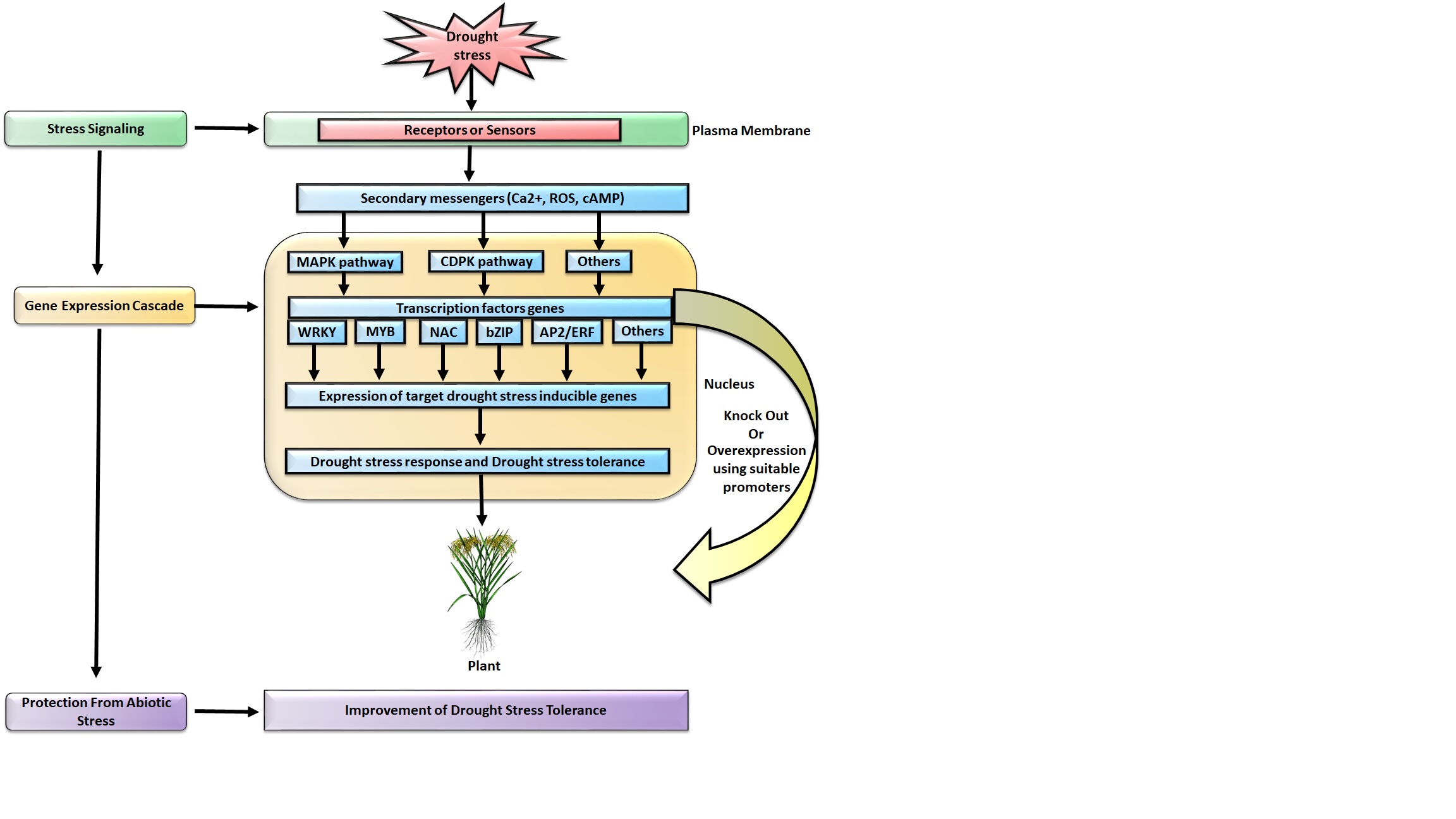Review
Version 1
Preserved in Portico This version is not peer-reviewed
Recent Advances in the Drought Stress Tolerance in Rice
Version 1
: Received: 8 October 2019 / Approved: 9 October 2019 / Online: 9 October 2019 (10:36:28 CEST)
Version 2 : Received: 23 December 2019 / Approved: 23 December 2019 / Online: 23 December 2019 (11:56:03 CET)
Version 3 : Received: 24 December 2019 / Approved: 24 December 2019 / Online: 24 December 2019 (11:39:50 CET)
Version 2 : Received: 23 December 2019 / Approved: 23 December 2019 / Online: 23 December 2019 (11:56:03 CET)
Version 3 : Received: 24 December 2019 / Approved: 24 December 2019 / Online: 24 December 2019 (11:39:50 CET)
How to cite: Kumar, M. Recent Advances in the Drought Stress Tolerance in Rice. Preprints 2019, 2019100099. https://doi.org/10.20944/preprints201910.0099.v1 Kumar, M. Recent Advances in the Drought Stress Tolerance in Rice. Preprints 2019, 2019100099. https://doi.org/10.20944/preprints201910.0099.v1
Abstract
Many studies were done in the development of drought stress-tolerant transgenic plants, including crop plants. Rice is considered to be a vital crop target for improving drought stress tolerance. Much transgenic rice showed improved drought stress tolerance was reported to date. They are genetically engineered plants that are developed by using genes that encode proteins involved in drought stress regulatory networks. These proteins include protein kinases, transcription factors, enzymes related to osmoprotectant or plant hormone synthesis, receptor-like kinase. Of the drought stress-tolerant transgenic rice plants described in this review, most of them display retarded plant growth. In crop crops, plant health is a fundamental agronomic trait that can directly affect yield. By understanding the regulatory mechanisms of retarded plant growth under drought stress, conditions are necessary precursors to developing genetically modified plants that result in high yields.
Keywords
drought stress; osmotic stress; rice; transcription factors; stress signaling; qtl; breeding
Subject
Biology and Life Sciences, Plant Sciences
Copyright: This is an open access article distributed under the Creative Commons Attribution License which permits unrestricted use, distribution, and reproduction in any medium, provided the original work is properly cited.
Comments (0)
We encourage comments and feedback from a broad range of readers. See criteria for comments and our Diversity statement.
Leave a public commentSend a private comment to the author(s)
* All users must log in before leaving a comment








